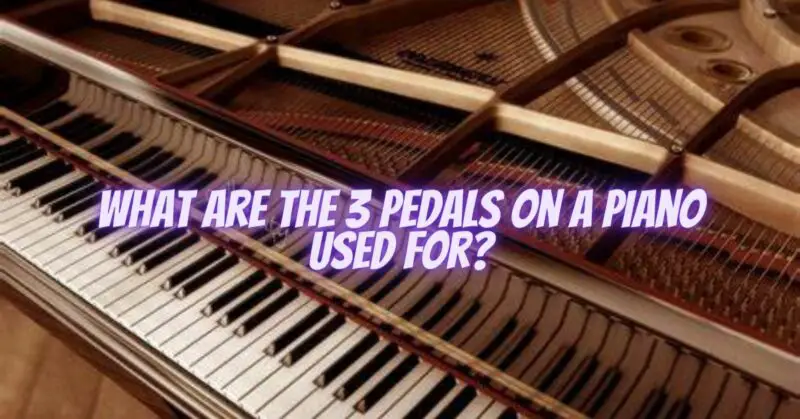A grand or upright piano is distinguished not only by its elegant appearance and resonant sound but also by the presence of three pedals at the pianist’s feet. These pedals offer a range of expressive possibilities, enabling pianists to shape their performances in unique ways. In this article, we will explore the functions of the three pedals on a piano and how they contribute to artistic expression.
- The Damper Pedal (Sustain Pedal):
The damper pedal, often the rightmost pedal, is the most commonly used pedal on a piano. When pressed down, it lifts the dampers from the strings, allowing them to vibrate freely and sustain their sound even after the keys are released. The damper pedal enhances the piano’s resonance and is primarily used for:
a. Sustaining Notes: By holding down the damper pedal, pianists can create a sustained sound, enabling seamless legato passages and enhancing the richness and fullness of the piano’s tone.
b. Enhancing Resonance: The damper pedal sympathetically activates other strings, contributing to a captivating halo of harmonics and overtones, which enriches the overall sound of the instrument.
c. Expressive Control: The damper pedal allows for expressive dynamics and tonal nuances. By partially depressing the pedal or utilizing half-pedaling techniques, pianists can achieve subtle and nuanced variations in sustain and volume.
- The Soft Pedal (Una Corda Pedal):
The soft pedal, often the leftmost pedal, is also known as the una corda pedal. When engaged, it slightly shifts the entire piano action to the right, causing the hammers to strike only one or two of the strings per note instead of the usual three. The soft pedal is primarily used for:
a. Dynamic Variation: The soft pedal enables pianists to produce a softer and more intimate sound. It is particularly effective for achieving pianissimo passages, creating a delicate and introspective atmosphere in the music.
b. Timbral Alteration: By striking fewer strings, the soft pedal produces a subtle change in tone color, resulting in a mellow and veiled quality. This effect can be artistically employed to evoke specific moods or to create contrasting textures within a musical piece.
- The Sostenuto Pedal:
The sostenuto pedal, often located in the middle, is the least frequently used pedal and is found mainly on grand pianos. Unlike the other two pedals, the sostenuto pedal acts on a selective basis. When depressed, it holds the dampers only for the keys that are being played at the moment. The sostenuto pedal is primarily used for:
a. Sustaining Specific Notes: Pianists can choose to sustain specific notes while keeping other notes unaffected. This selective sustain enables them to create unique tonal and harmonic effects, particularly useful in complex compositions with intricate layering of voices and textures.
b. Articulation and Clarity: By selectively sustaining specific notes, the sostenuto pedal allows for clearer and more precise articulation, even when other notes are being played concurrently. It facilitates the separation and distinctness of individual voices within complex musical passages.
Conclusion:
The three pedals on a piano—the damper pedal, soft pedal, and sostenuto pedal—offer pianists a palette of expressive possibilities. The damper pedal provides sustain and resonance, the soft pedal allows for dynamic variation and timbral alteration, and the sostenuto pedal enables selective sustain and enhances clarity. Mastering the art of pedal technique empowers pianists to shape their performances, bringing out the subtleties, emotions, and nuances within the music. By skillfully utilizing these pedals, pianists unlock the full expressive potential of the piano, captivating audiences with their artistry and bringing compositions to life.


